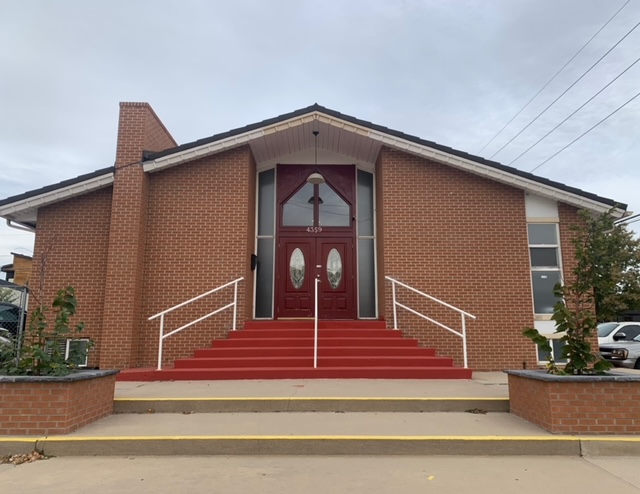Beginnings
The Adventist Hispanic ministry in the heartland of America began in Colorado in the 1920’s. Two areas of Spanish-speaking populations existed: one in Denver and the other in the San Luis Valley. In 1925, the Hispanic membership of Mid-America Union consisted of only one family and two other members in Denver. Elder G. T. Vore brought continuity to the Hispanic work and leadership needed to permanently establish Hispanic Seventh-day Adventism in Colorado.
Rocky Mountain
In December 1927, Elder Vore launched an evangelistic series in a vacant store in Denver, baptizing 11 converts who joined the group in Colorado to form the first Spanish-speaking Adventist church in the Rocky Mountain Conference. While living in the San Luis Valley, Elder Vore evangelized among the Hispanic population in the rural areas and small towns in Colorado. His home was in Monte Vista, but he also worked in neighboring towns.
As the decade of the 1930’s ended, the Hispanic ministry in Colorado, though small, showed signs of flourishing. Leadership had passed from the hands of hard-working Anglos such as Elder Vore to Hispanic members themselves. In the 1990’s, the long-awaited revival and growth among Hispanics took place under the ministry of Claudio Martín, pastor of the Denver Hispanic Church. This spawned seven new churches, all except one within a 60-mile radius of Denver.
Iowa-Missouri
Hispanic work in other conferences in the Mid-America Union too hold much later than in Colorado. In 1964, a colporteur planted seed in Kansas City, Missouri. Manuel Vásquez, then a ministerial student at Union College in Lincoln, Nebraska, spent the summer in Kansas City colporteuring in the Hispanic neighborhood, leaving Adventist books in many homes. Manuel made friends with families who were ready to receive Bible studies, but because there was not a Hispanic pastor to follow up with them, the opportunity disappeared.
In 1978, with the arrival of Luis Torres and four Spanish-speaking families, the first Sabbath School was organized in Kansas City, Missouri. In August of 1981, the Iowa- Missouri Conference invited Pastor Ignacio Chaviano to come to Kansas City to labor among the Hispanic population. They began regular Sabbath services for the seven Hispanic members meeting in the Blue Chapel of the English Central Church. By 1986, the group had grown and been organized into a church. Ten years later, Pastor Juan Acosta was called from San Francisco, California, to lead the congregation in Kansas City. The work was beginning to pick up and eventually the Hispanic membership in Kansas City exceeded 100.
Kansas-Nebraska
In 1955, a group of Hispanics started meeting at the College View Church in Lincoln, Nebraska. For several years, this group kept up its weekly meetings, moving from College View Church to Capital View Church. In 1977, the group became large enough to purchase a church building of its own.
In 1961, the Hispanic work started with a great success at Scottsbluff, Nebraska. Elder Raúl Sanchez came from El Paso, Texas, to hold evangelistic meetings there. The attendance was around 150 for most of the four-months series. Within two years, they had 50 members with 80 attending Sabbath school. As these efforts ends, the Scottsbluff Hispanic Church was successfully established.
The Hispanic work started in Wichita, Kansas in 1984. Elder Isaac Lara, Mid-America Union evangelist, held evangelistic meetings in Wichita that resulted in 75 people giving their lives to Jesus. The conference hired Pastor Bolivar Tejada to shepherd these new believers. The work spread to Kansas City, Garden City, Great Bend, Dodge City, Topeka and several other places in Kansas.
Minnesota
In 1989, five young Hispanics arrived from El Salvador in St. Paul, Minnesota, looking for employment. When they attempted to find a Hispanic church to worship with, they discovered there was no Hispanic Church in the entire state of Minnesota. They asked Elder Alvin Smith to begin holding services, since his wife Eva spoke Spanish. Five months later, the first Hispanic Sabbath school was organized in Minnesota.
By the following year, the little Hispanic group had grown to eight. When Elder Lee Huff, conference president, learned about the Hispanic group meeting in the St. Paul East Church, he was convicted that the time had come to establish the Hispanic work in their conference. So he traveled to the Adventist Theological Seminary in Berrien Springs, Michigan, looking for a bilingual Hispanic pastor. Elder Ben Barcenas accepted the call and by August 1992 the first Hispanic church was organized with 32 members. The conference then hired Pastor Rubén Rivera to lead the new church. That same year, with an offering collected at camp meeting, the first church building was purchased for the Hispanic congregation.
Central States Conference
In 1998, the Central States Conference initiated work among the Hispanic population in Omaha, Nebraska. Pastor Eduardo Jacobo was leading the new work there and by 1998 the first church was established as part of the Central States Conference. Later more churches were planted in northeastern Nebraska; Sioux City, Iowa; Aurora, Colorado; and the Kansas City area. The most recent church planted is in Sioux Falls, South Dakota.
A bright future
Outside of Colorado, the Mid-America Union did not attract large numbers of Hispanic immigrants as did the southern border of the United States and some of the large North American cities. But ripples from the general migration and the northward flow of refugees beginning in the 1960’s produced Hispanic communities in the heartland of America that were large enough to expect evangelistic activity.
The total Hispanic-speaking membership in the Mid-America Union is now nearly 8,500. We are one of the smallest unions in Hispanic membership; however, the future looks very bright considering the exponential growth happening in the last few years.
In reviewing the history of the Hispanic work in Mid-America Union, we can see that it wasn’t the work of a single person. It was an effort of a group of people working together with the same passion, mission and goal in mind. It was leaders with vision, sponsoring churches, committed pastors and members with fervor for evangelism. May the Lord inspire us to keep working together with this same passion until his soon return!
“I planted the seed and Apollos watered it. But God is the one who made the seed grow” Acts 3:6 (MSG).
Read this article in Spanish at https://outlookmag.org/la-historia-del-trabajo-hispano-en-el-territorio-de-mid-america-union/










